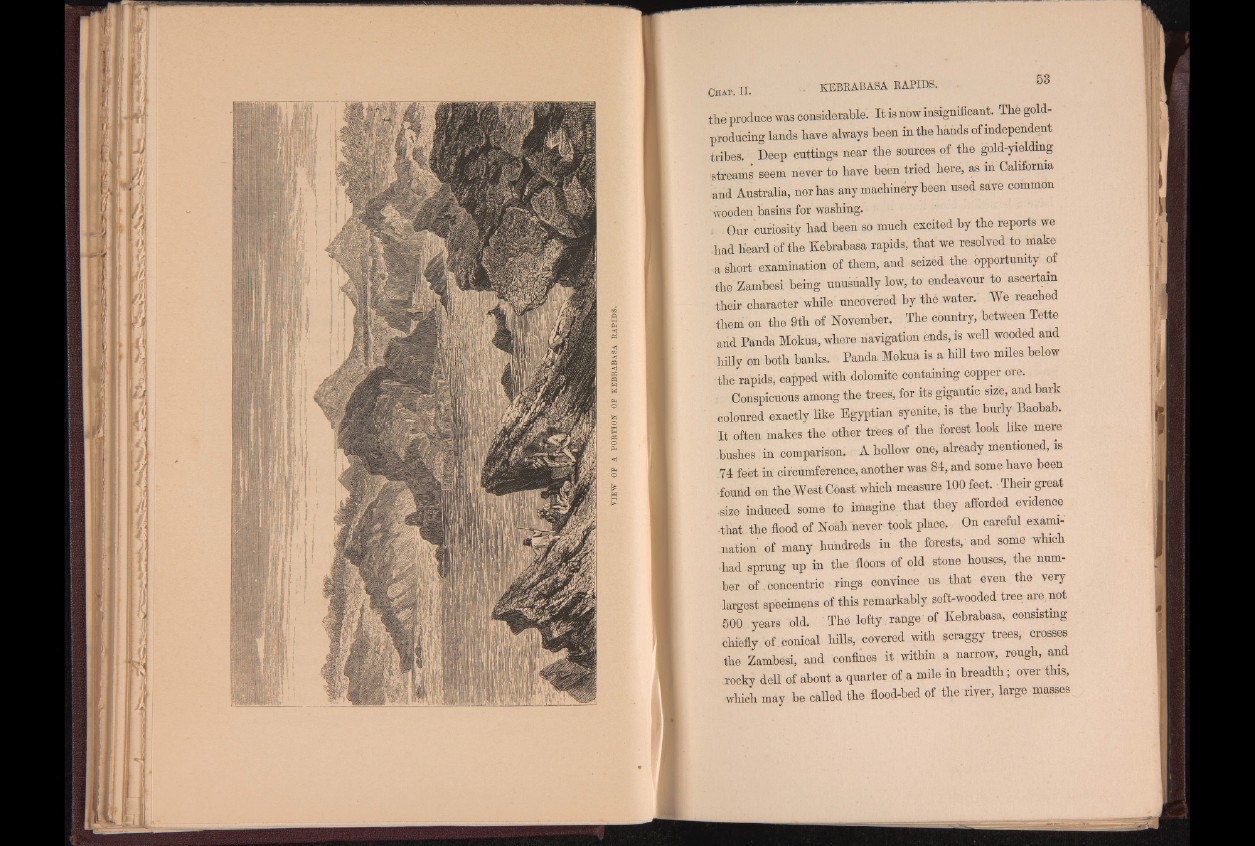
VIEW OE A PORTION OF KEBRABASA RAPIDS.
C h a p , II. KEBRABASA RAPIDS.
the produce was considerable. It is now insignificant. Thè gold-
producing lands have always been i n the hands of independent
tribes. Deep cuttings near the sources of the gold-yielding
‘streams seem never to have been tried here, as in California
and Australia, nor has any machinery been used save common
wooden To&sins for w&sliing.
Our curiosity had been so much excited by the reports we
•had heard of the Kebrabasa rapids, that we resolved to make
a short examination of them, and seizéd the opportunity of
the Zambesi being unusually low, to endeavour to ascertain
their character while uncovered by the water. We reached
them on the 9th of November. The country, between Tette
and Panda Mokua, where navigation ends, is well wooded and
hilly on both banks. Panda Mokua is a hill two miles below
the rapids, capped with dolomite containing copper ore.
Conspicuous among the trees; for its gigantic size, and bar
coloured exactly like Egyptian syenite, is the burly Baobab.
It often makes the other trees of the forest look like mere
bushes : in comparison. A hollow one, already mentioned, is
74 feet in circumference, another was 84, and some have been
-found on the West Coast which measure 100 feet. Them great
size induced some to imagine that they afforded evidence
-that the flood of.Noah never took place, On careful examination
of many hundreds in the forests, and some which
-had sprung up in the floors of old stone houses, the number
of .concentric rings convince us that even the very
largest specimens of this remarkably soft-wooded tree are not
500 years old. Thè lofty range of Kebrabasa, consisting
chiefly of . conical hills, covered with scraggy trees, crosses
the Zambesi, and confines it within a narrow, rough, and
rocky dell of about a quarter of a mile in breadth ; over this,
which may be called the flood-bed of the river, large masses